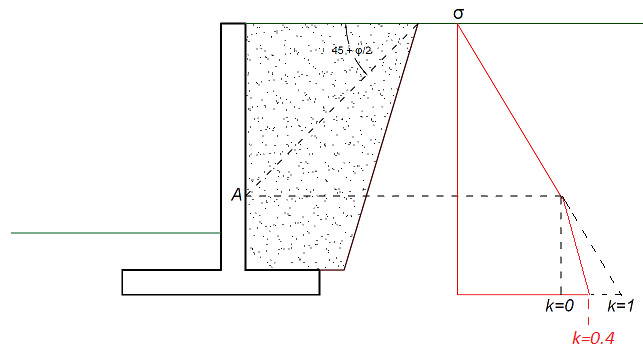Influence of Backfill
The programs can use one of the following variants of a backfill:
Backfill is not considered |
|
Type 1 - backfill behind the structure in soils led from the upper edge of the foundation slab |
|
Type 2 - backfill behind the structure in soils led from the lowest point of the foundation slab |
|
Type 3 - rock behind the wall |
|
The soil assigned to the backfill is selected in the combo list (parameters of soils are defined in the frame "Soils"). Also, the angle of the backfill is input.
For types 1 and 2, the angle of the backfill α is input (max 60°). The angle of backfill has an influence only on the global stability analysis when transferring data into the "Slope Stability" program. The earth pressures are always calculated for the backfill soil. The original soils (behind the backfill) have no effect on the earth pressures calculation.
Note: The slope of the backfill should be such that the length of the backfill extends beyond the area of failure of the original soil. If this is not the case, the influence of the original soil on the pressure calculation will not be considered, which may lead to skewed results.
For type 3, the geometry and the reduction coefficient k are defined. The reduction coefficient k has an effect on earth pressures below the intersection of active pressure wedge and back face of the wall (point A). When k = 1, the earth pressure is not reduced. When k = 0, the earth pressure is constant below the intersection. When using this type of backfill, it is necessary to be sure that the soil body behind the backfill has no impact on the wall at all - for example, there is a rock massive. In this case it is not possible to transfer data into the "Slope Stability" program.




